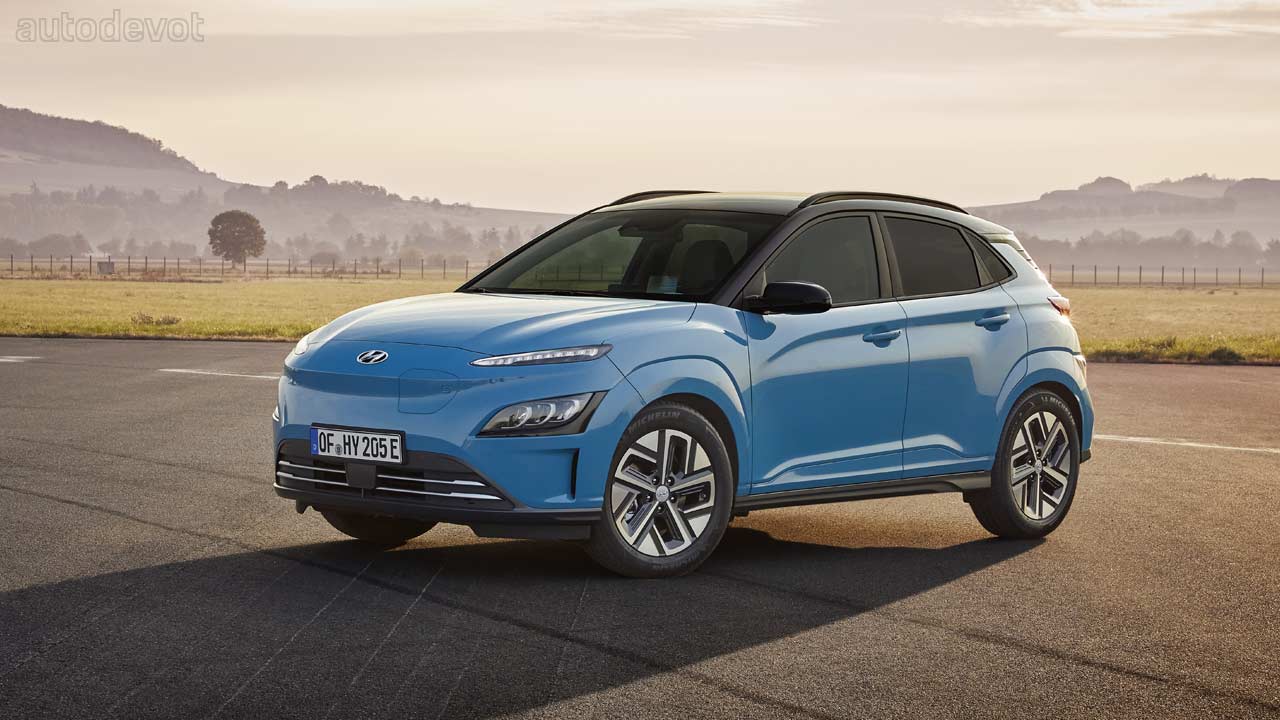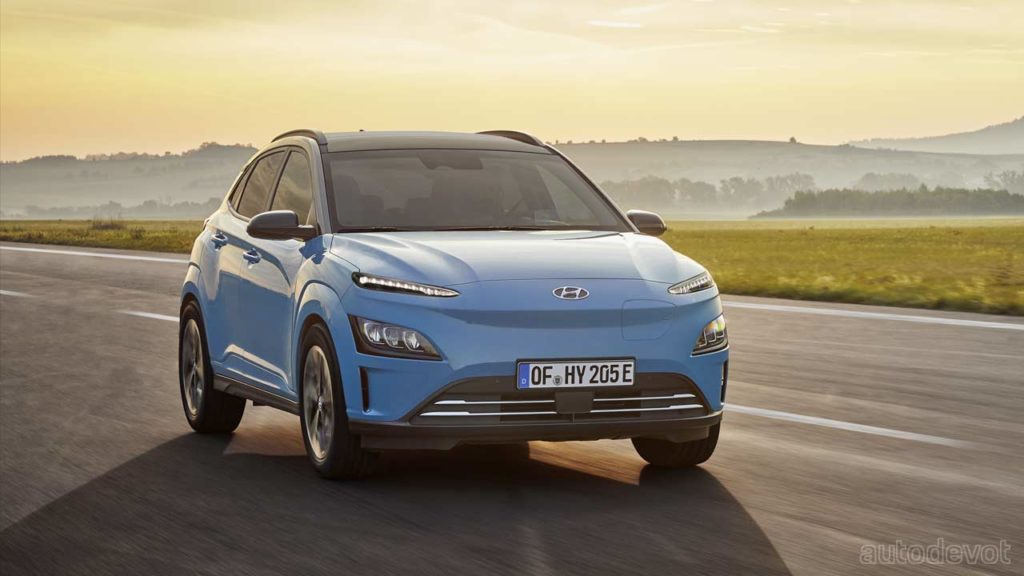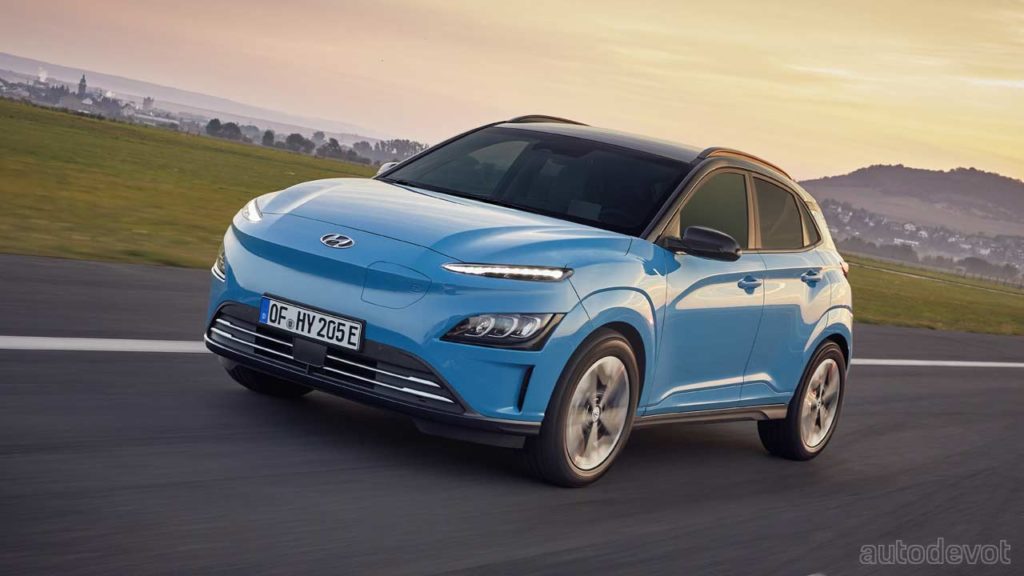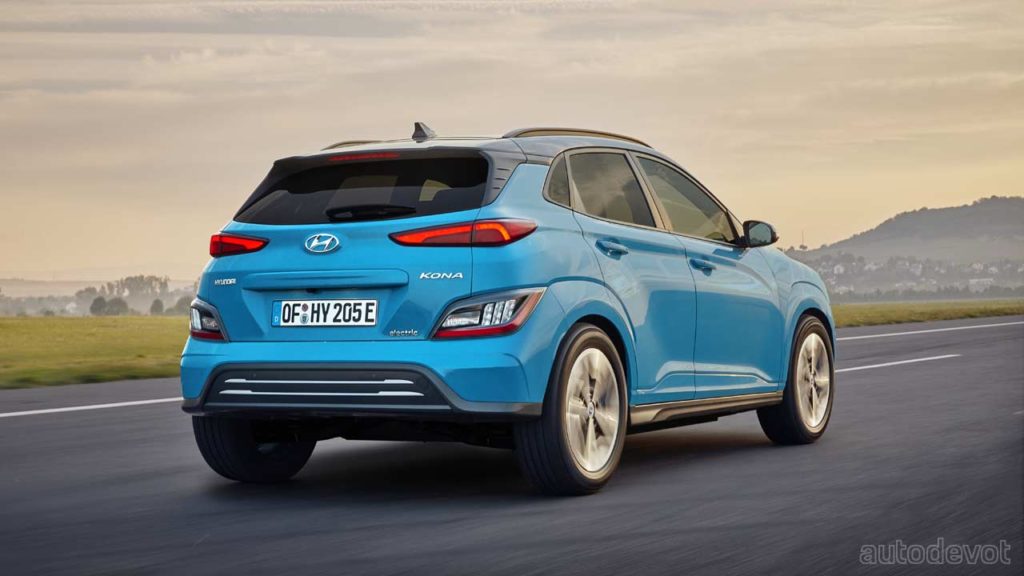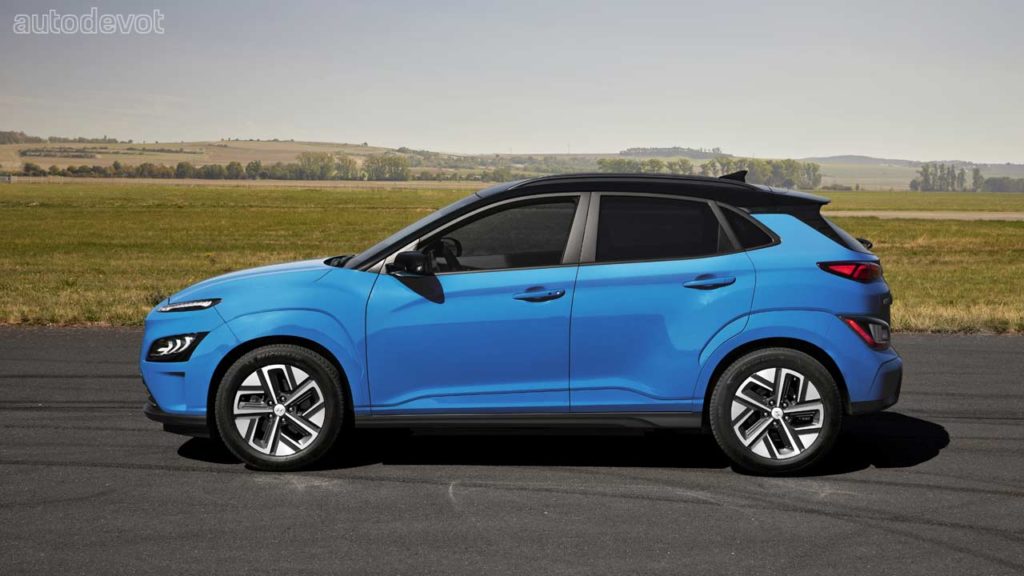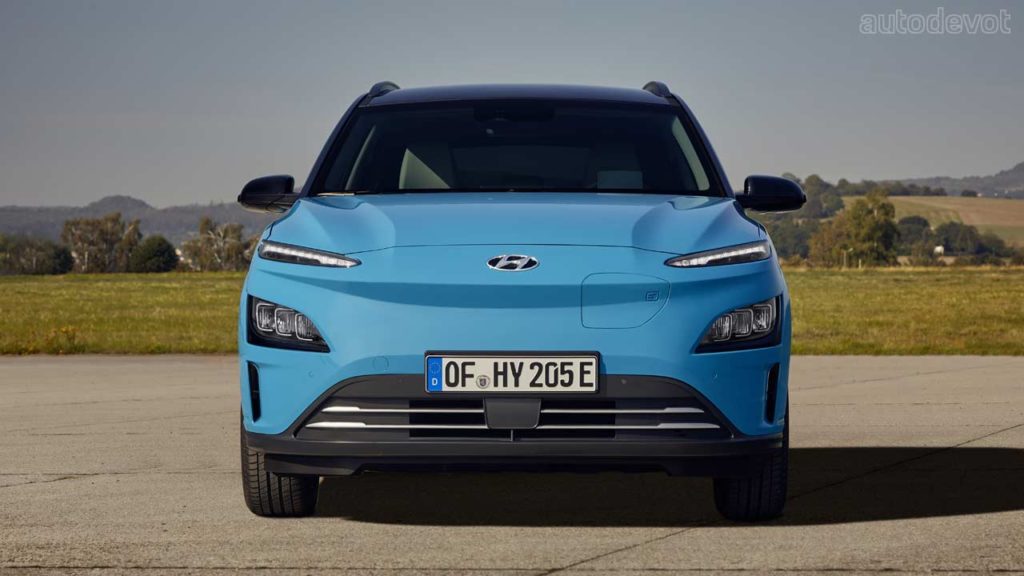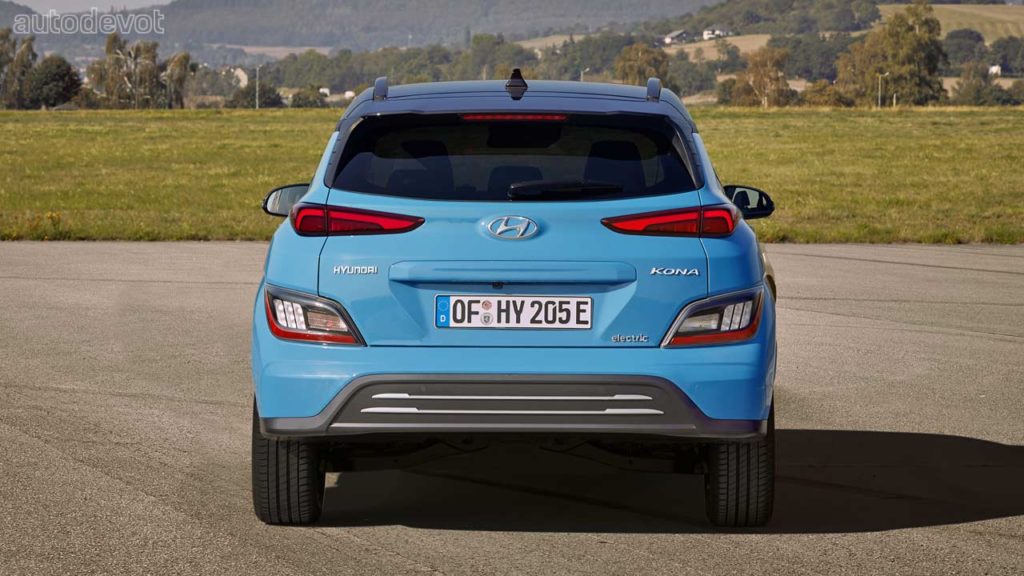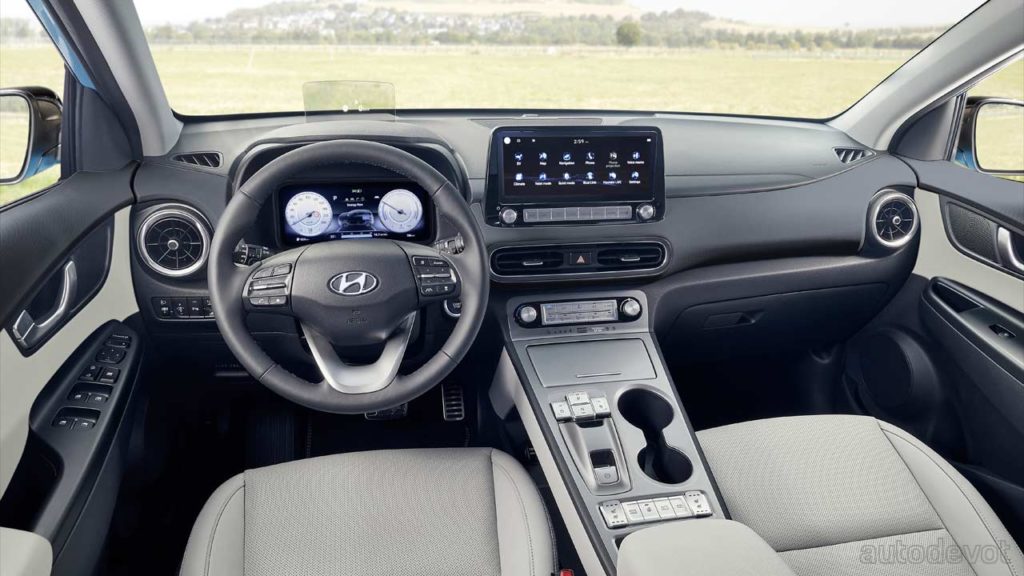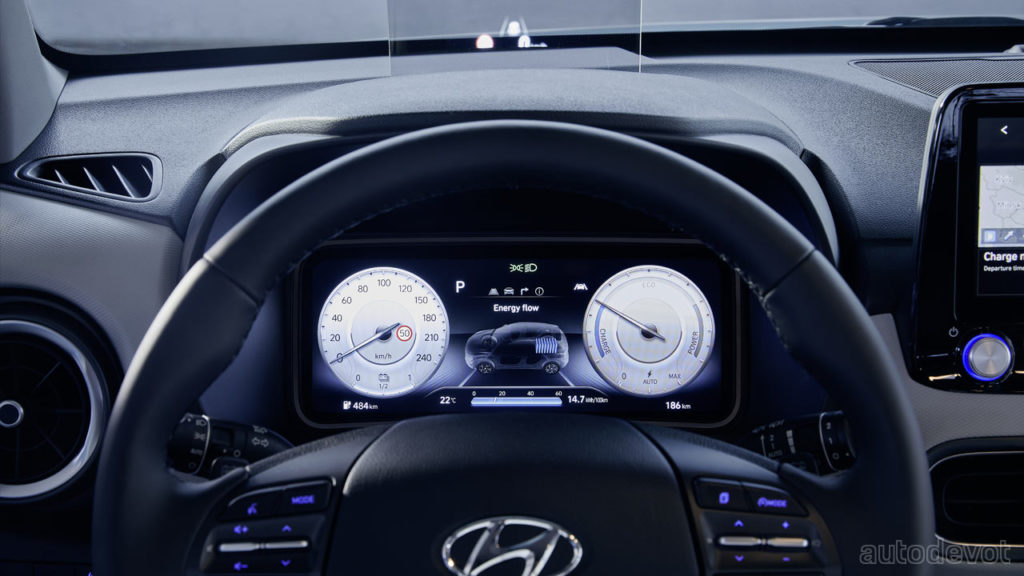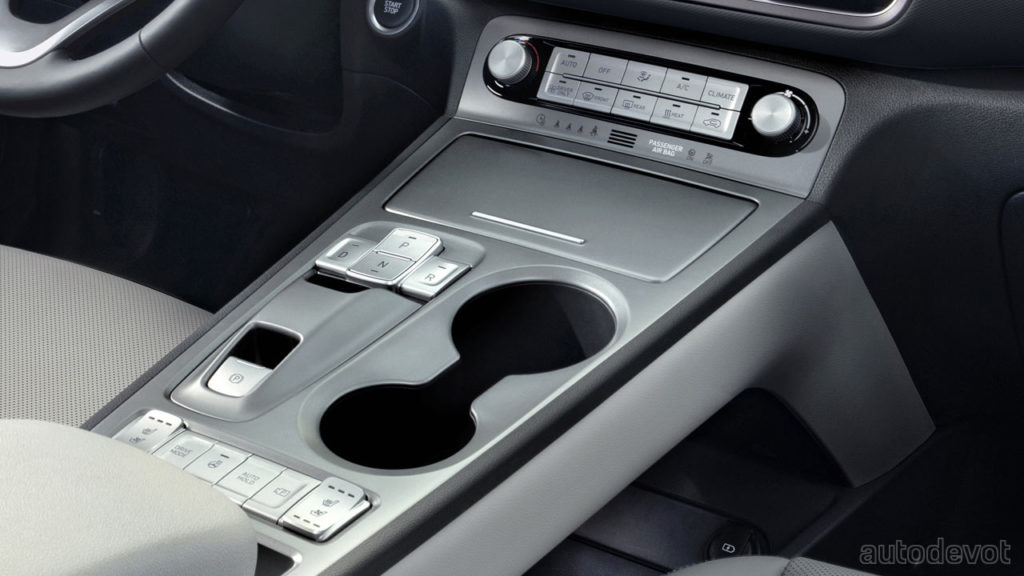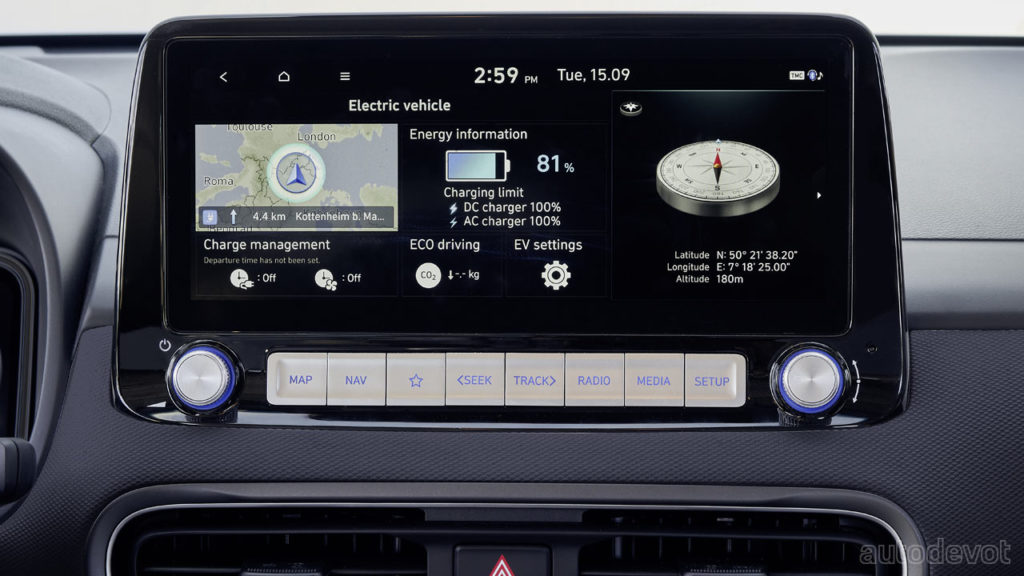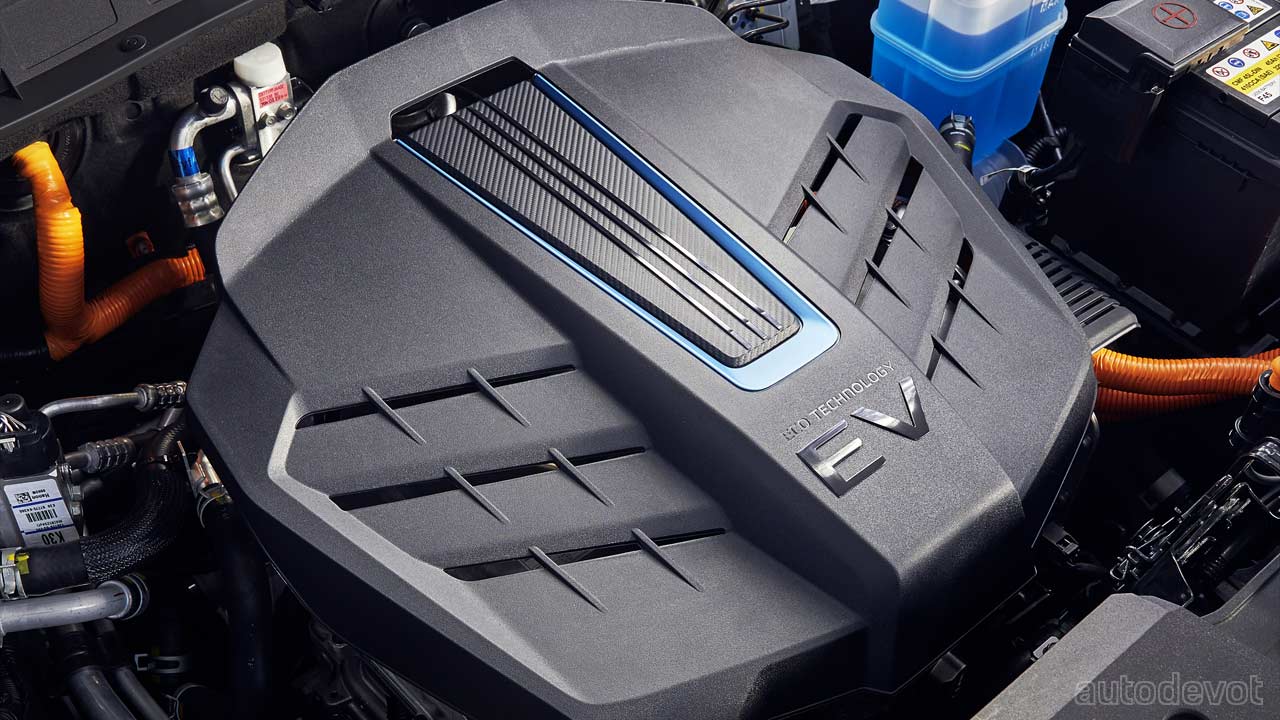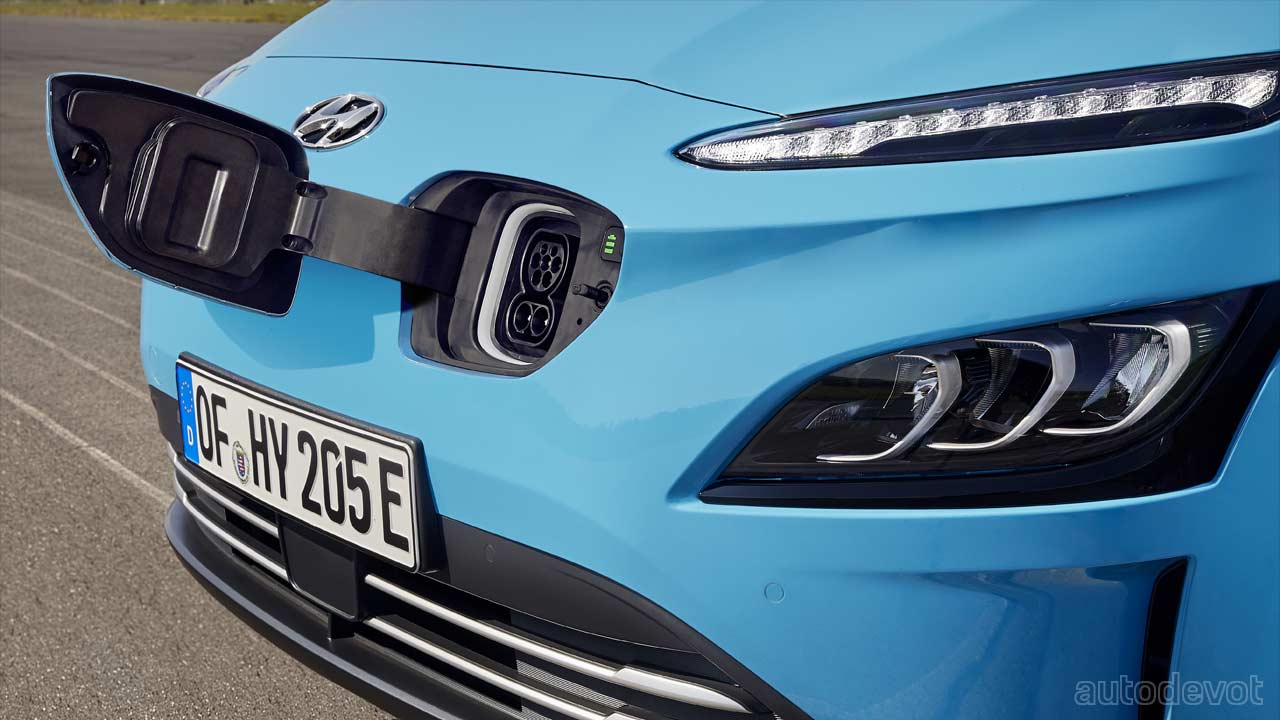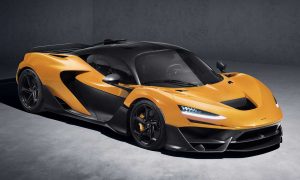The Hyundai Kona facelift is now joined by the all-electric version, with similar styling updates and a number of improvements. The Kona Electric is a fairly successful model, especially in Europe where it has sold more than 53,000 units in two years. Its global sales have crossed 120K units.
Anyway, the styling updates are rather subtle compared to the outgoing model, but are noticeable and look tasteful. Unlike a pattern that’s on the front fascia of the outgoing model, which sort of camouflages the charging port, the facelift sports a clean, smooth look. As a result, the charging port is more noticeable in the facelift even from a distance. The new 17-inch wheels look pretty cool too.
The new Kona EV offers a bunch of new exterior colors including two-tone roof options. The example featured here is finished in Surfy Blue with the optional Phantom Black roof.
The refreshed cabin benefits from all the updates made on the regular Kona such as a 10.25-inch digital driver display and an optional 10.25-inch central touch display. There are two interior color packages: the Black package is available with cloth, cloth-leather or leather materials, while the two-tone Grey package is available with cloth-leather mélange or leather materials.
The Bluelink connected car technology has been updated as well, which is now claimed to offer more personalization; the data can be transferred to other Hyundai vehicles offering the same feature.
Upgraded Hyundai SmartSense features would include Blind-Spot Collision-Avoidance Assist (BCA), Rear Cross-Traffic Collision-Avoidance Assist (RCCA), Leading Vehicle Departure Alert (LVDA), Safe Exit Warning (SEW), and Rear Seat Alert (RSA).
Moving on to the business end of the story, the new Kona Electric offers two options like its predecessor. The base variant packs the same 39.2 kWh battery pack supplying juice to the same motor that pumps out 100 kW (136 hp) and 395 Nm (291 lb-ft) of torque. The long range variant is packing the same 64 kWh battery pack as before, feeding the motor that offers the same 150 kW (204 hp) and 395 Nm (291 lb-ft) of torque.
However, Hyundai claims that after making tyre improvements, the 64 kWh battery version offers a range of up to 484 km/300 mi (WLTP) on a single charge, while the 39.2 kWh version offers up to 305 km/190 mi (WLTP).
As for charging, both battery packs are claimed to take about 47 minutes to charge from 10-80% with 100 kW DC fast-charging. A regular 220-volt socket might take more than 17 hours to juice-up the 39.2 kWh battery pack and more than 28 hours for the larger 64 kWh battery pack. Download the technical data sheet here.
Also read: Hyundai Kona Electric: over 100k global sales in 2 years

Leave a Reply
Note: Comments that are unrelated to the post above get automatically filtered into the trash bin.
